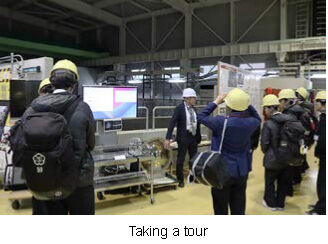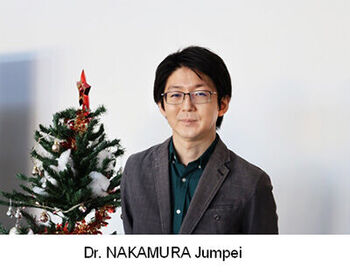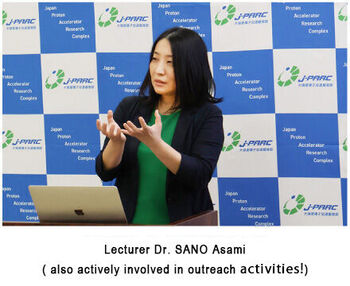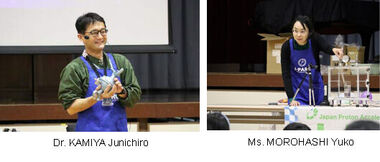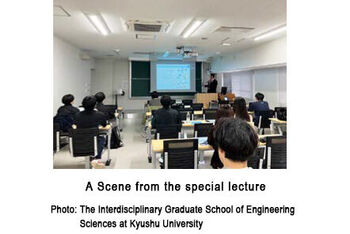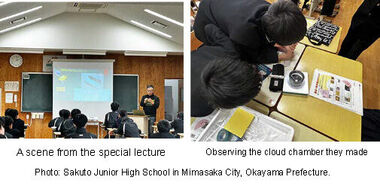J-PARC News December 2024 (Issue #236)
■The 19th (2025) Physical Society of Japan in Division 10 Young Scientist Award
Dr. NAKAMURA Jumpei, a member of the Muon Section, the Materials and Life Science Division, was awarded the 19th Young Scientist Award of the Japan Physical Society of Japan in Division 10. The award is based not only on his excellent research content, but also on his future potential as a researcher and expectations for the future vitalization of the Physical Society of Japan.
Division 10 refers to the field of material structural properties such as X-rays, particle beams, nanostructures and phonons. Dr. NAKAMURA's research was titled "Research on layered chalcogenide materials by μSR experiments". The award lecture will be given at the next Spring Meeting.
■Fluorine Enhanced Metal Extraction Technology
- Contributing to a sustainable society by developing a new extraction method that achieves both efficiency and safety - (November 7th)
In the "solvent extraction method" that can separate and purify useful metals from solutions, we have developed a new fluorine-based extractant that successfully achieves the coexistence of two capabilities: "high extraction efficiency" and "no third phase formation". This achievement provides a new guideline for the development of an extraction system that achieves both high extraction efficiency and safety, which was not possible in conventional solvent extraction method, by utilizing the hydrophobicity of fluorine.
■First Experimental Verification of Percolation Theory in Magnetic Phase Transition through the Discovery of a New “Static Short-range Magnetic Order”
- Expectations for Application of Next-Generation Magnetic Devices - (November 28th)
Various phenomena in nature are based on changes in states of matter known as phase transitions. In this study, we synthesized a novel quantum magnetic material (Cu4(OH)6Cl2) in a Kagome lattice and discovered its unique static short-range order that has not been observed before.
We have also succeeded in demonstrating a magnetic transition consistent with the predictions of the percolation theory of mathematical models.
■A protein that acts as an "electron carrier" in redox reactions in living organisms.
Elucidation of the mechanism of potential control common to all living organisms for energy acquisition
- Discovery of a "nanoswitch mechanism" controlled by a single hydrogen atom - (December 2)
Using neutrons at the IBARAKI Biological crystal diffractometer (iBIX) in the Materials and Life Science Experimental Facility (MLF) at J-PARC, researchers have succeeded in elucidating the precise three-dimensional structure of ferredoxin, including hydrogen atoms. In addition, they have shown for the first time that the potential of the iron-sulfur cluster changes dramatically by the presence or absence of a single hydrogen atom, and that this mechanism is common in various organisms.
■Hello Science
Studying rocks to understand the Earth ~The world expanding 6,371 kilometers underground~ (November 29th)
Dr. SANO Asami of the Materials and Life Science Division presented a unique research combining high temperature and pressure conditions with neutron diffraction using PLANET, the High-Pressure Neutron Diffractometer, at the Materials and Life Science Experimental Facility in J-PARC.
In the first half of the lecture, the structure and chemical composition of the Earth’s interior, as well as temperature and pressure, were explained. This information is derived from a combination of multiple methods, including seismic wave observations and studies of natural rocks. The second half of the talk focused on an introduction to PLANET, using a large press installed on the beamline to reproduce the conditions of the Earth’s deep interior at high temperature and pressure conditions. By studying the structure of minerals and magmas, including the location of hydrogen, research is being carried out to reveal the physical properties of the Earth and its evolution.
■J-PARC Workshop (October 28th-30th)
The J-PARC Workshop, “Explore Small Wonders in Non-crystalline Materials with 1 MW J-PARC Beam: A Concerto of Freedom and Constraint,” was held jointly by the J-PARC Center, Metallic glass research group of the Society of Materials Science, Japan, and CROSS.
In non-crystalline materials such as liquids and glasses, the atoms are neither arranged regularly like crystals, nor move freely like gases. They are loosely bound to each other. According to the recent research, there are microscopic structural fluctuations in liquids and glasses, where the atoms are believed to be arranged randomly but homogeneously. Those are the wonders in the small world. The fluctuations are caused by the competition between the constraint and the freedom and give unique nature to liquids and glasses. Up-and-coming researchers came to the workshop from all over Japan, hoping that the origin of the small wonders will be elucidated by the 1 MW J-PARC beam. There are 58 participants (including one online speaker), 27 oral presentations, and 10 poster presentations, with productive discussions throughout the workshop. The 22 people visited the MLF and enjoyed the tour.
■Visiting class at Ohmika Elementary School in Hitachi City (November 18th)
Dr. KAMIYA Junichiro and Ms. MOROHASHI Yuko from the Accelerator Division gave a special lesson on "Let's take a look at the invisible vacuum". This was part of a program organized by the Hitachi Civic Center for elementary schools in Hitachi City.
It was a good time for the 5th and 6th graders to be able to experience the invisible world of 'vacuum'.
After the lesson, many children gathered around the experimental equipments.
Some commented that "it was interesting to see how the size and the shape of objects changed when they are in vacuum" and "it was fun to see a vacuum experiment that we can't normally see", while others said, "it might be fun to develop things like this" and there were also comments that made you look forward to the future.
■Lecture on 'New Visualization Techniques Using Pulsed Neutrons' at Kyushu University (November 19th)
Dr. KAI Tetsuya of the Neutron Science Section gave a special lecture to students at the Interdisciplinary Graduate School of Engineering Sciences in Kyushu University. He explained techniques for visualizing the spatial distributions of crystal structures of metals, elements, temperature, and magnetic field using pulsed neutrons, and also shared his experience in developing the high-intensity pulsed neutron source available at J-PARC.
■Special Lecture at Sakuto Junior High School in Mimasaka City, Okayama Prefecture (December 6th)
Dr. KOBAYASHI Takashi, Director of the J-PARC Center, gave a special lecture on "The secrets of the big universe, the secrets of the microscopic world and with accelerators" to about 50 first- and second-year students at Sakuto Junior High School in Mimasaka City, Okayama Prefecture.
After listening to the lecture, the students tried their hand at making “cloud chamber”, that makes invisible radiation visible. Students commented that "I wasn't really interested in science or science lessons, but today's lesson made me a bit more interested and I think I might even like it." and "It was a good experience to be able to see mysterious things I've never seen before".
■J-PARC Sanpomichi 53 -Learning from Tours- 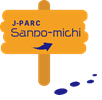
J-PARC is actively engaged in face-to-face publicity work. We are deepening our interaction with people outside the organization through various means, including our largest event, the Open House, as well as outreach lectures and Hello Science.
Of these, the opportunity to meet the most people is the J-PARC tour. The number of visitors has been increasing since the coronavirus crisis subsided, and from April to November this year, we had about 2,400 visitors, and we expect to have over 3,000 visitors by the end of this fiscal year. Researchers from government agencies, companies and universities, as well as students and individuals who are genuinely interested in J-PARC, come from all over Japan and the world.
People's interests in J-PARC are also diverse, and the questions they ask are also wide-ranging. Sometimes we get in-depth questions from researchers that even J-PARC experts find difficult to answer. We often get questions from businesspeople about using J-PARC. Students considering employment at J-PARC sometimes ask indirectly about the atmosphere in the workplace. Such questions from visitors are also useful for understanding the needs of J-PARC. We will not only communicate the research situation here. We will also take your needs into account and use them in our future research activities.
